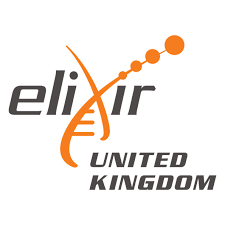GtoPdb is requesting financial support from commercial users. Please see our sustainability page for more information.
Contents:
Gene and Protein Information  |
||||||
| class A G protein-coupled receptor | ||||||
| Species | TM | AA | Chromosomal Location | Gene Symbol | Gene Name | Reference |
| Human | 7 | 462 | 17q25.1 | GPR142 | G protein-coupled receptor 142 | 1-2 |
| Mouse | 7 | 365 | 11 E2 | Gpr142 | G protein-coupled receptor 142 | 1-2 |
| Rat | 7 | 340 | 10q32.1 | Gpr142 | G protein-coupled receptor 142 | |
Previous and Unofficial Names  |
| KIF19 | AXOR103 | G-protein coupled receptor PGR2 |
Database Links  |
|
| Specialist databases | |
| GPCRdb | gp142_human (Hs), gp142_mouse (Mm) |
| Other databases | |
| Alphafold | Q7Z601 (Hs), Q7TQN9 (Mm), F1LWD8 (Rn) |
| ChEMBL Target | CHEMBL2069161 (Hs), CHEMBL2069162 (Mm), CHEMBL3632456 (Rn) |
| Ensembl Gene | ENSG00000257008 (Hs), ENSMUSG00000034677 (Mm), ENSRNOG00000024446 (Rn) |
| Entrez Gene | 350383 (Hs), 217302 (Mm), 501735 (Rn) |
| Human Protein Atlas | ENSG00000257008 (Hs) |
| KEGG Gene | hsa:350383 (Hs), mmu:217302 (Mm), rno:501735 (Rn) |
| OMIM | 609046 (Hs) |
| Pharos | Q7Z601 (Hs) |
| RefSeq Nucleotide | NM_181790 (Hs), NM_181749 (Mm) |
| RefSeq Protein | NP_861455 (Hs), NP_861414 (Mm) |
| UniProtKB | Q7Z601 (Hs), Q7TQN9 (Mm), F1LWD8 (Rn) |
| Wikipedia | GPR142 (Hs) |
Download all structure-activity data for this target as a CSV file 
| Agonists | |||||||||||||||||||||||||||||||||||||||||||||||||||
| Key to terms and symbols | View all chemical structures | Click column headers to sort | |||||||||||||||||||||||||||||||||||||||||||||||||
|
|||||||||||||||||||||||||||||||||||||||||||||||||||
| Agonist Comments | |||||||||||||||||||||||||||||||||||||||||||||||||||
| The high identity of 50% between GPR142 and GPR139 is suggestive of shared ligands [2]. | |||||||||||||||||||||||||||||||||||||||||||||||||||
Tissue Distribution 
|
||||||||
|
||||||||
|
||||||||
| Tissue Distribution Comments | ||||||||
| Embryonic expression of GPR142 suggests the receptor may play a role in brain, bone and blood formation [2]. | ||||||||
Expression Datasets  |
|
|
Biologically Significant Variants 
|
||||||||||||||||||
|
||||||||||||||||||
|
||||||||||||||||||
|
References
1. Fredriksson R, Höglund PJ, Gloriam DE, Lagerström MC, Schiöth HB. (2003) Seven evolutionarily conserved human rhodopsin G protein-coupled receptors lacking close relatives. FEBS Lett, 554 (3): 381-8. [PMID:14623098]
2. Süsens U, Hermans-Borgmeyer I, Urny J, Schaller HC. (2006) Characterisation and differential expression of two very closely related G-protein-coupled receptors, GPR139 and GPR142, in mouse tissue and during mouse development. Neuropharmacology, 50 (4): 512-20. [PMID:16378626]
3. Toda N, Hao X, Ogawa Y, Oda K, Yu M, Fu Z, Chen Y, Kim Y, Lizarzaburu M, Lively S et al.. (2013) Potent and Orally Bioavailable GPR142 Agonists as Novel Insulin Secretagogues for the Treatment of Type 2 Diabetes. ACS Med Chem Lett, 4 (8): 790-4. [PMID:24900747]







